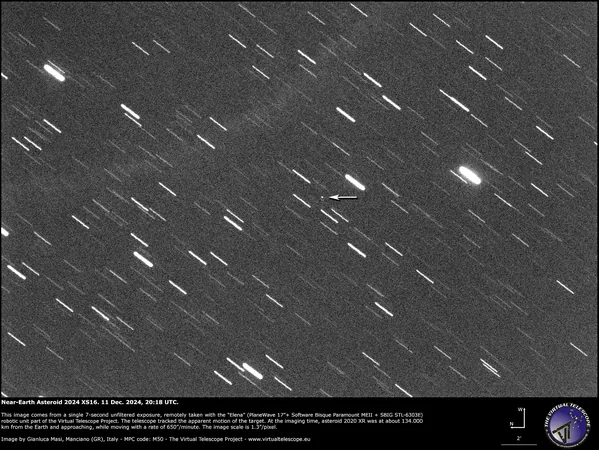
Stunning Auction: Rare Dinosaur Trio Sells for £12.4 Million!
2024-12-12
Author: Yu
Stunning Auction: Rare Dinosaur Trio Sells for £12.4 Million!
Fossils from a remarkable trio of dinosaurs have captivated collectors and fetched over £12 million at a recent auction, a testament to the enduring allure of prehistoric life.
The awe-inspiring skeletal remains, dating back approximately 150 million years to the Late Jurassic period, were sold for £12.4 million (or $15.7 million) at Christie’s in London. This spectacular offering included two Allosauruses and one Stegosaurus, all excavated from the same site in Carbon County, Wyoming. After their meticulous excavation, the fossils were carefully transported to London in 12 crates where expert teams worked on reconstructing these ancient giants.
James Hyslop, Head of Science & Natural History at Christie's, expressed the wonder of being in the presence of such ancient beings: "It is humbling to stand in the presence of these ancient giants and marvel at the wonders of our Earth's past."
The Allosaurus, often heralded as a precursor to the legendary Tyrannosaurus rex (T. rex), was a formidable predator of its time, renowned for its sharp claws and powerful biting force. In contrast, the Stegosaurus represents a classic herbivore, characterized by its distinctive armoured plates and spiked tail, serving as vital defenses against predators in its challenging ecosystem.
Importantly, Mr. Hyslop noted that due to the incomplete nature of fossil discoveries, all three skeletons have been supplemented with cast, sculpted, and 3D-printed materials, displayed on custom frames that allow for a more comprehensive representation of these magnificent creatures. The Stegosaurus boasts around 144 bone elements, while the adult Allosaurus features about 143 bones, and the juvenile variant has around 135.
While the allure of dinosaur bones continues to draw significant sums at auction, this practice has faced scrutiny from experts. Critics argue that the private acquisition of fossils limits access for researchers and the general public to these significant scientific treasures. Dr. Susannah Maidment from London's Natural History Museum previously expressed concern, noting that, "the problem is these specimens go on sale for huge amounts of money, far more than museums can afford."
However, Mr. Hyslop provided a counter perspective, observing that many private collectors are passionate about paleontology and often seek to make their collections available for public enjoyment. He highlighted that past significant sales, such as Stan the T. rex and a raptor skeleton, now reside in museums or are displayed for public viewing.
The recent sale underscores the ongoing fascination with dinosaurs and raises important questions about the future of fossil collection and the balance between private ownership and public access. As scientists continue to unearth the mysteries of our planet's prehistoric past, the story of these ancient creatures remains not only a subject of study but also a source of wonder for enthusiasts around the world.



 Brasil (PT)
Brasil (PT)
 Canada (EN)
Canada (EN)
 Chile (ES)
Chile (ES)
 España (ES)
España (ES)
 France (FR)
France (FR)
 Hong Kong (EN)
Hong Kong (EN)
 Italia (IT)
Italia (IT)
 日本 (JA)
日本 (JA)
 Magyarország (HU)
Magyarország (HU)
 Norge (NO)
Norge (NO)
 Polska (PL)
Polska (PL)
 Schweiz (DE)
Schweiz (DE)
 Singapore (EN)
Singapore (EN)
 Sverige (SV)
Sverige (SV)
 Suomi (FI)
Suomi (FI)
 Türkiye (TR)
Türkiye (TR)